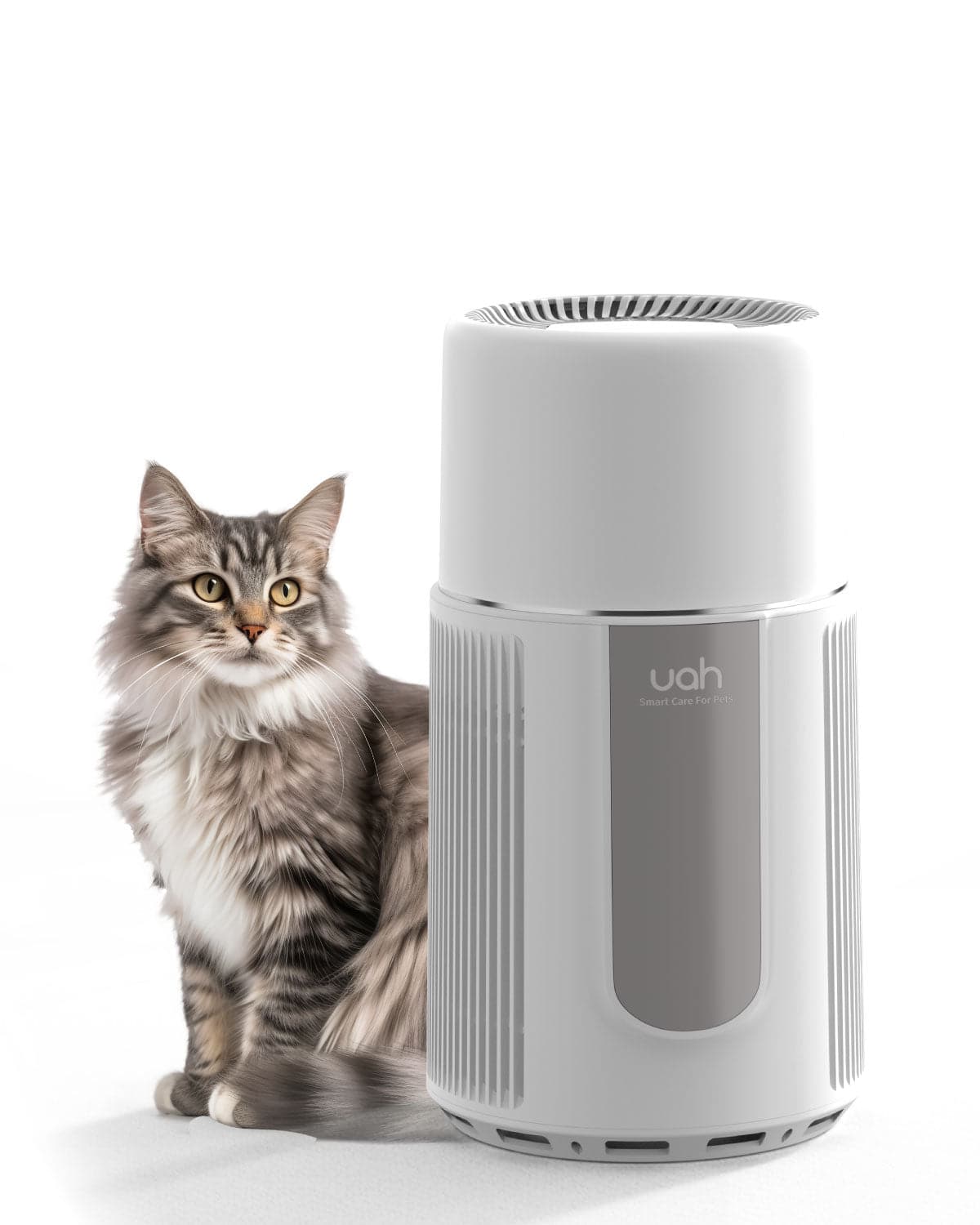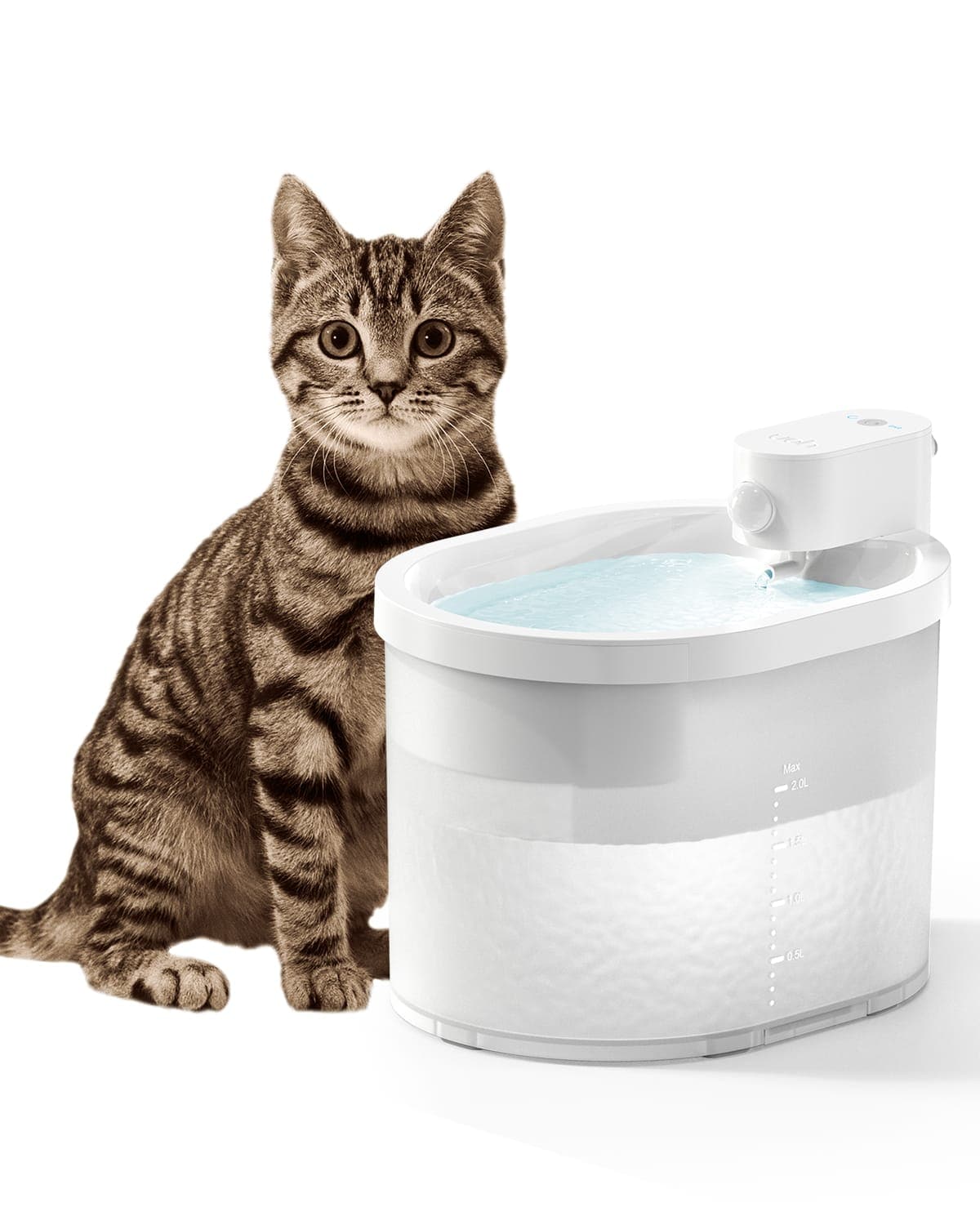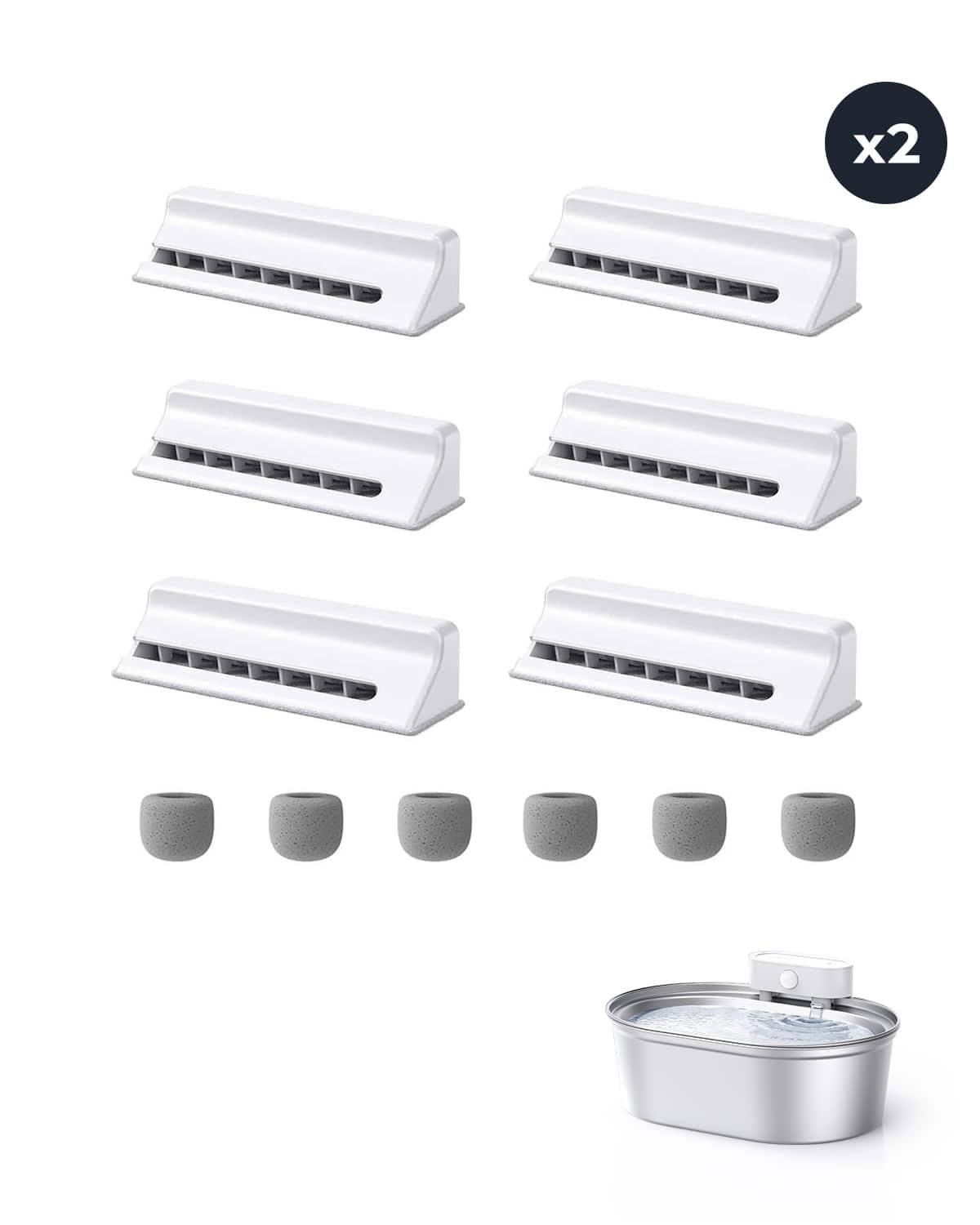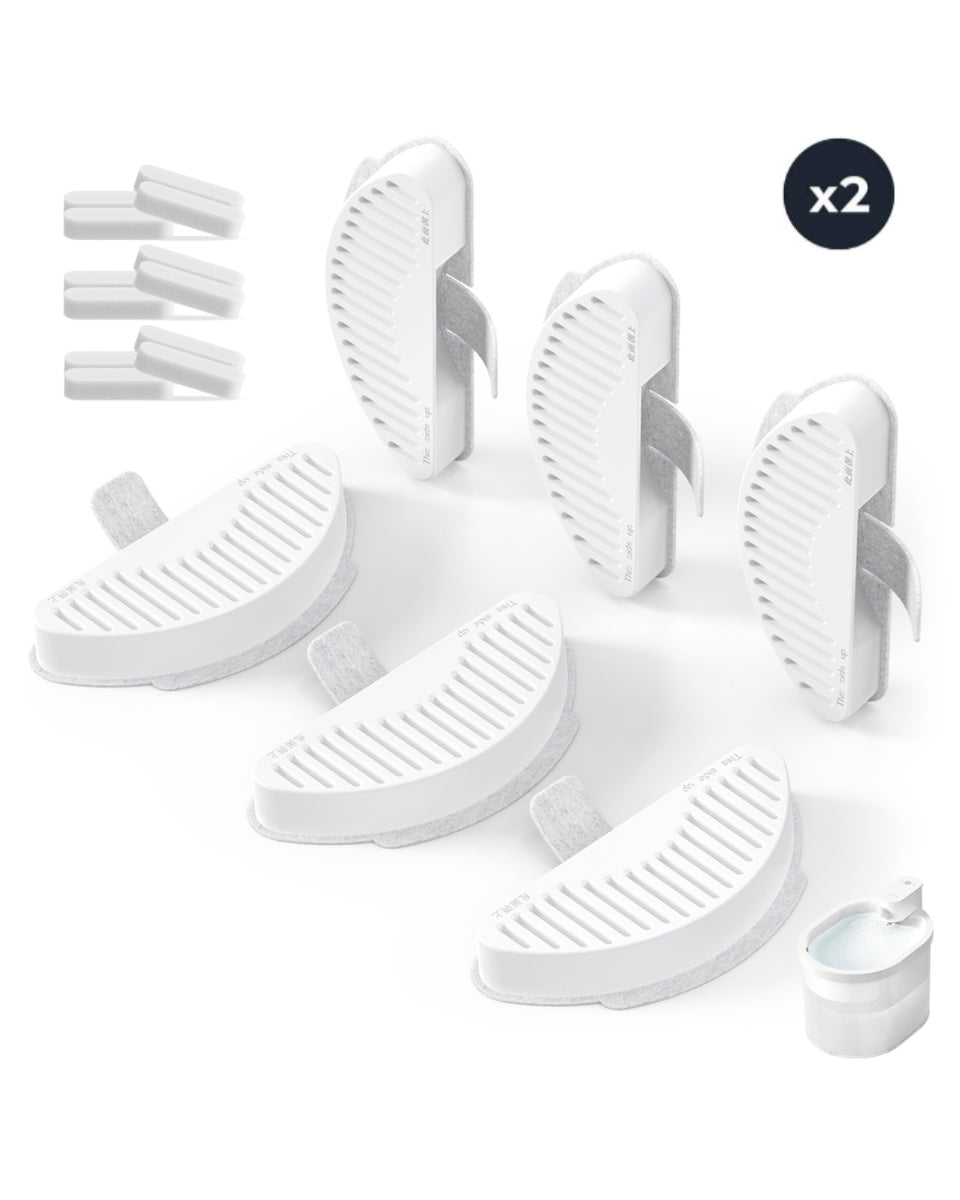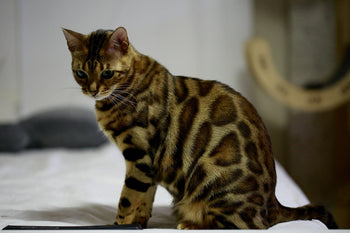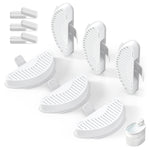
As pet owners, we want to ensure that our cats are healthy and happy. One important aspect of a cat's health is hydration. Domestic cats are descendants of larger felines that do not require much water for everyday living. As a result, cats have a low thirst drive and drink small amounts of water throughout the day, while dogs lap up large amounts at a time.
However, hydration is necessary for a cat's body to survive and perform vital jobs. If you start noticing that your cat is going to the water bowl less frequently, it could be a sign of an underlying health issue. In this article, we will discuss why cats may not be drinking water, how much water they should drink, and tips for getting cats to drink more water. We will also answer some frequently asked questions about cat hydration and provide insights on why a cat water fountain is important.
Key Takeaways
- Cats have a low thirst drive and drink small amounts of water throughout the day.
- Hydration is necessary for a cat's body to survive and perform vital jobs.
- If you notice that your cat is going to the water bowl less frequently, it could be a sign of an underlying health issue.
Why Is My Cat Not Drinking Water?
Cats are notorious for not drinking enough water, which can lead to dehydration and serious health conditions. There are many reasons why your cat may not be drinking enough water, including:
-
Sufficient hydration: Since cats require less water than dogs, they may already be appropriately hydrated.
-
Dirty water bowl: Cats are clean animals, and they may avoid drinking from a water bowl that is dirty or filled with bacteria. It is important to keep water bowls clean and filled with fresh water.
-
Unfriendly location: Cats are creatures of habit, and they may not appreciate it if you change the location of their bowls. Placing water bowls in high-anxiety locations, such as near loud washing machines or around other alpha animals in the house, may also cause them to avoid drinking. Place several water bowls around the house in quiet, safe areas to tempt your cat to drink.
-
Dental disease: Tooth or mouth pain may cause your cat to stop drinking due to discomfort. Other signs of dental disease include decreased appetite, dropping food when eating, pawing at the face or mouth, facial swelling, and drooling.
-
Gastrointestinal upset: Gastroenteritis, pancreatitis, inflammatory bowel diseases, cancers, and other diseases may cause your feline friend to decrease or stop water intake.
If you suspect that your cat is not drinking enough water, it is important to take action to prevent dehydration. You can encourage your cat to drink more water by providing clean, fresh water in multiple locations around your home. You can also try adding wet food to your cat's diet, as wet food contains more moisture than dry food.
If your cat continues to refuse water, it may be a sign of an underlying health condition, such as kidney disease, diabetes, hyperthyroidism, liver disease, or periodontal disease. In these cases, it is important to consult with your veterinarian to determine the best course of treatment.
Is It an Emergency if My Cat Won’t Drink Water?
Dehydration in cats is a serious condition that can even be fatal. If your cat is not drinking enough water, they may become dehydrated. Unfortunately, pet parents don’t always notice the signs of dehydration in cats until they become severe. It is important to monitor your cat's water intake and look out for the following signs of dehydration:
-
Dry gums: Try to press your index finger gently into your cat’s gums and watch them turn from white back to a normal pink color. This should happen in less than 2 seconds. If the gums are cherry red, your finger sticks to the gums, or the refill time is longer than 2 seconds, your cat may be significantly dehydrated.
-
Increased skin tenting: Gently pinch the skin between your cat’s shoulder blades or on top of the head, pull it upward, then let go. The skin should bounce back into place within a second. If the skin remains tented any longer, your cat is likely dehydrated.
-
Sunken eyes: Your cat’s eyes will appear sunken into their head with moderate to severe dehydration.
-
Constipation: The colon’s job is to pull water out of the feces to rehydrate the body and form stool. When the body is already dehydrated, the colon continues to dry out the stool, leading to constipation. If your cat is straining to defecate in the litter box, and there is no feces or only small, hard fecal balls, your cat may be constipated and dehydrated.
- Persistent vomiting/diarrhea: Both processes rid a large amount of water from the body, making it difficult for your cat to maintain normal hydration. One episode of vomiting or diarrhea is likely not concerning dehydration, but if it’s paired with other clinical signs or becomes persistent, dehydration will occur.
If you notice any of these clinical signs, it is important to contact your veterinarian to discuss these symptoms as soon as possible. An emergency veterinarian should be considered if your vet’s office is not open, as dehydration can occur quickly and cause severe illness in cats.
Cats with underlying health issues such as kidney disease, cancer, diabetes, or hyperthyroidism are more likely to become dehydrated and need to be monitored closely if they start drinking less water.
Cats need to drink more water than usual if they are affected by severe heat, prolonged exposure to heat, or are physically active. If you see any loss of appetite, lethargy, weakness, vomiting or diarrhea, straining in the litter box, or trouble breathing, bring your cat to a veterinarian.
In conclusion, dehydration in cats is a serious condition that can be fatal if left untreated. As pet parents, it is important to monitor your cat's water intake and look out for signs of dehydration. If you notice any of these signs, contact your veterinarian as soon as possible.
How Much Water Should a Cat Drink?
As responsible pet owners, we must ensure our feline friends stay hydrated. According to the Committee on Nutrient Requirements of Dogs and Cats, cats usually drink an ounce of water for every half-ounce of dry food ingested. A normal, healthy cat should drink about 4 ounces (about ½ cup) of water per 5 pounds of body weight per day. However, this amount varies depending on each cat’s diet and underlying medical conditions.
Monitoring your cat's water consumption is essential to ensure they are getting enough water. You can measure the exact amount of water placed in the water bowl at the beginning and end of each day. Keep in mind that cats often ingest water from other places, such as wet/canned food, faucets, or other pet bowls in the house.
To keep your cat hydrated and healthy, provide them with fresh water throughout the day and monitor their water intake. If you notice any changes in their water consumption, consult your veterinarian.
How to Get Cats to Drink Water
Cats need to drink water to stay healthy, but sometimes they can be picky about it. Here are some tips to encourage your cat to drink more water:
-
Provide multiple clean water bowls: Place several bowls throughout the house and refill them with fresh water several times a day to avoid dust, hair, or other contaminants. Keep the bowls clean to avoid bacterial growth and odors.
-
Choose the right location: Keep water bowls in quiet, calm areas away from loud noises and other animals so that your cat feels safe. This may mean changing the location of the water bowl. Show your cat where the new spot is. Remember, cats are creatures of habit.
-
Consider changing the bowl material: Try changing the bowls from plastic to ceramic or stainless steel, which may change the flavor of the water and help control any plastic allergies.
-
Try wet food: Most dry kibble diets consist of only about 10% water, while canned diets may be up to 70% water. Consider adding or changing to a canned food to add more hydration to your pet’s meals. You may even consider adding more water to the food, or even low-sodium chicken broth if your veterinarian deems this safe for your cat. Discuss any diet changes with your veterinarian first, as canned foods and dry food contain different types of nutrients and may vary in calories.
-
Consider a pet water fountain: Cats innately look for running water, and a water fountain provides continual fresh water. An added benefit is that you don’t need to leave your faucet trickling throughout the day. It is important to keep these water fountains clean, to continue providing fresh water to your cat.
If your cat still needs to be interested in drinking water after trying these tips, contact your veterinarian. Decreased water intake paired with other clinical signs like dehydration, vomiting, diarrhea, weight loss, lack of appetite, lethargy, open-mouth breathing, or decreased or increased visits to the litter box may indicate an underlying health issue. Your veterinarian will perform a thorough physical examination and recommend some baseline lab tests to investigate the cause of this behavior.
Why Cat Water Fountains Are Important

Cat water fountains are important because they encourage cats to drink more water, which is essential for their health. Cats are known for being picky drinkers, and they often prefer running water over still water. This is where cat water fountains come in handy. The Uahpet cat water fountain is a great example of a cat water fountain that has a unique LED light design that could attract cats to drink water. The fountain's spout boasts a rotating sensor light ball that illuminates upon detecting movement, captivating their attention, enhancing water visibility, and effectively promoting hydration.
In addition to promoting hydration, cat water fountains also help to keep the water clean and fresh. The water is constantly moving, which prevents bacteria and other contaminants from building up in the bowl. This is especially important for cats that are prone to urinary tract infections.
Another benefit of cat water fountains is that they are low maintenance. Most cat water fountains are easy to clean and come with replaceable filters that help to keep the water fresh.
Overall, cat water fountains are a great investment for cat owners who want to ensure that their cats are getting enough water. They are easy to maintain, promote hydration, and can even be a fun addition to your home decor.
Frequently Asked Questions
How can we encourage our cat to drink more water?
There are several ways to encourage your cat to drink more water. Some of the tips to encourage your cat to drink more water include:
- Providing fresh and clean water in a clean bowl every day.
- Placing water bowls in different locations around the house.
- Using a water fountain or dripping faucet to provide running water.
- Adding flavor to the water, such as tuna juice or chicken broth.
- Mixing wet food with water to increase water intake.
What are some possible reasons our cat is not drinking water?
There are several reasons why your cat may not be drinking enough water, including:
- Health issues such as kidney disease or urinary tract infections.
- Dental problems that make it painful to drink water.
- Environmental factors such as the location of the water bowl or the type of bowl used.
- Stress or anxiety that causes a decrease in water intake.
Is it safe to force our cat to drink water?
No, it is not safe to force your cat to drink water. Forcing your cat to drink water can cause them to aspirate, which can lead to pneumonia. If you are concerned about your cat's hydration, it is best to consult with your veterinarian for advice.
What are some alternative ways to offer water to our cat?
There are several alternative ways to offer water to your cat, including:
- Wet food, contains more moisture than dry food.
- Broths or gravies that can be added to dry food.
- Ice cubes made from chicken broth or tuna juice.
- Water fountains or dripping faucets that provide running water.
When should we be concerned about our cat not drinking water?
You should be concerned if your cat is not drinking water for more than 24 hours. Dehydration can lead to serious health issues, including kidney failure and urinary tract infections. If you notice that your cat is not drinking water, it is important to consult with your veterinarian as soon as possible.
How can we ensure our cats stay hydrated even if they don't like water?
If your cat doesn't like water, there are several ways to ensure they stay hydrated, including:
- Feeding wet food contains more moisture than dry food.
- Adding water to dry food to increase moisture intake.
- Offering broths or gravies that can be added to dry food.
- Providing ice cubes made from chicken broth or tuna juice.
- Using a water fountain or dripping faucet to provide running water.
How can we encourage our cat to drink more water?
There are several ways to encourage your cat to drink more water. Some of the tips to encourage your cat to drink more water include:
- Providing fresh and clean water in a clean bowl every day.
- Placing water bowls in different locations around the house.
- Using a water fountain or dripping faucet to provide running water.
- Adding flavor to the water, such as tuna juice or chicken broth.
- Mixing wet food with water to increase water intake.
What are some possible reasons our cat is not drinking water?
There are several reasons why your cat may not be drinking enough water, including:
- Health issues such as kidney disease or urinary tract infections.
- Dental problems that make it painful to drink water.
- Environmental factors such as the location of the water bowl or the type of bowl used.
- Stress or anxiety that causes a decrease in water intake.
Is it safe to force our cat to drink water?
No, it is not safe to force your cat to drink water. Forcing your cat to drink water can cause them to aspirate, which can lead to pneumonia. If you are concerned about your cat's hydration, it is best to consult with your veterinarian for advice.
What are some alternative ways to offer water to our cat?
There are several alternative ways to offer water to your cat, including:
- Wet food, contains more moisture than dry food.
- Broths or gravies that can be added to dry food.
- Ice cubes made from chicken broth or tuna juice.
- Water fountains or dripping faucets that provide running water.
When should we be concerned about our cat not drinking water?
You should be concerned if your cat is not drinking water for more than 24 hours. Dehydration can lead to serious health issues, including kidney failure and urinary tract infections. If you notice that your cat is not drinking water, it is important to consult with your veterinarian as soon as possible.
How can we ensure our cats stay hydrated even if they don't like water?
If your cat doesn't like water, there are several ways to ensure they stay hydrated, including:
- Feeding wet food contains more moisture than dry food.
- Adding water to dry food to increase moisture intake.
- Offering broths or gravies that can be added to dry food.
- Providing ice cubes made from chicken broth or tuna juice.
- Using a water fountain or dripping faucet to provide running water.



